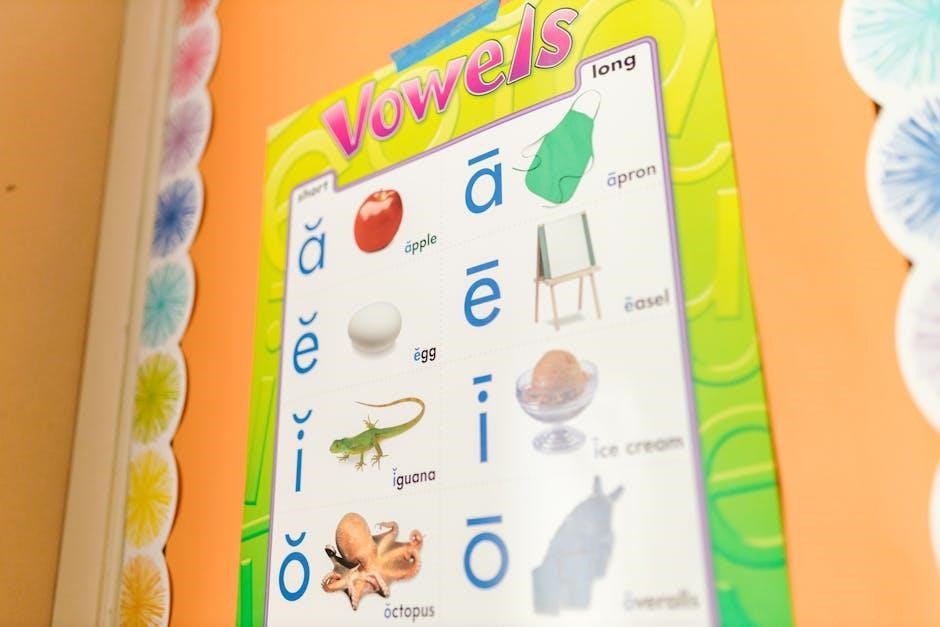Discover the art of perfect fit with Lucchese, a legacy brand since 1883. This guide helps you navigate sizing, comfort, and care for a tailored boot experience.

Understanding the Importance of Proper Boot Fit
A proper boot fit is essential for comfort, support, and durability. Ill-fitting boots can cause discomfort, blisters, and even affect posture. Lucchese boots are designed to mold to your foot over time, ensuring a personalized fit. A snug yet comfortable fit is crucial, as it prevents excessive movement that can lead to wear and tear. Proper fit also enhances the boot’s performance, whether for daily wear or specific activities. Lucchese’s craftsmanship ensures that each boot adapts to your foot’s shape, providing long-lasting comfort and support. Investing in the right fit guarantees a superior wearing experience and extends the life of your boots.
Overview of Lucchese Boot Construction

Lucchese boots are renowned for their meticulous craftsmanship and high-quality materials. Each boot begins with a handcrafted last, the foundation that ensures a precise fit. The construction process involves carefully selected leathers, such as buffalo or exotic skins, which are durable and moldable. The boots feature intricate stitching and detailing, reflecting the brand’s commitment to excellence. The vamp, quarters, and sole are designed to provide both support and flexibility. Lucchese’s construction methods blend traditional techniques with modern innovations, resulting in boots that are both stylish and functional. This attention to detail ensures that every pair meets the highest standards of comfort and longevity, making Lucchese a leader in luxury footwear.

Key Features of Lucchese Boots
Lucchese boots are crafted with premium leathers, meticulous stitching, and timeless designs. They feature a handcrafted last for precise fit, durable construction, and classic western styling that endures.
The Role of the Last in Boot Fit
The last is the foundation of every Lucchese boot, determining its shape and fit. Crafted to mirror the foot’s contours, it ensures a snug yet comfortable fit. Each last is meticulously designed to accommodate different foot shapes, providing consistent sizing across styles. Lucchese’s commitment to using high-quality lasts ensures that every boot molds to the wearer’s foot over time, creating a personalized fit. This attention to detail is why Lucchese boots are renowned for their comfort and durability, making the last an essential element in their boot-making process.
Leather Quality and Its Impact on Fit
Lucchese boots are crafted from premium leather, ensuring a superior fit and comfort. The high-quality leather molds to the foot over time, creating a personalized fit. Proper conditioning maintains the leather’s suppleness, preventing stiffness and extending the boot’s life. The break-in period allows the leather to conform to the foot’s shape, offering a snug yet comfortable fit. Lucchese’s commitment to using exceptional materials ensures that the leather not only enhances the boot’s durability but also contributes to a tailored fit. Regular care, such as cleaning and conditioning, is essential to preserve the leather’s integrity and maintain the optimal fit.
Unique Design Elements for Comfort and Support
Lucchese boots feature unique design elements that prioritize comfort and support. The meticulous craftsmanship includes cushioned insoles and soft, breathable linings to ensure all-day wearability. The boots’ ergonomic design, with a focus on arch support and a roomy toe box, enhances comfort. Additionally, the use of flexible yet durable materials allows for natural foot movement. These design elements work together to provide a balance of support and flexibility, making Lucchese boots ideal for both casual and formal occasions. The attention to detail in every aspect of the boot’s construction ensures a comfortable and supportive fit that lasts.
Sizing Considerations
Lucchese boots typically run true to size, but western styles may fit slightly smaller than dress shoes due to their unique construction and design.
How Lucchese Boots Compare to Other Brands
Lucchese boots are renowned for their precise fit and premium craftsmanship, often surpassing other brands in comfort and durability. Unlike mass-produced boots, Lucchese uses high-quality materials and traditional techniques, ensuring a snug yet comfortable fit. While brands like Justin and Nocona offer similar styles, Lucchese stands out with its attention to detail and customization options. Many customers find Lucchese boots to be more consistent in sizing compared to other brands, with a focus on molding to the foot over time. This dedication to excellence makes Lucchese a top choice for those seeking long-lasting, superior footwear.

Western Boot Sizing vs. Dress Shoe Sizing
Western boots, like Lucchese, often fit differently than dress shoes due to their unique construction. While dress shoes may have a more forgiving fit, western boots are designed to be snug and supportive. Lucchese boots generally run true to size, but some customers find their western boot size slightly smaller than their dress shoe size. This is because western boots are built with a sturdier sole and higher shaft, which can create a tighter fit around the foot and ankle. To ensure the best fit, it’s recommended to try boots on in person or consult a sizing chart. Remember, a properly fitting boot should feel like a firm handshake across the instep, with the ball of your foot resting in the widest part of the boot.
Rule of Thumb: Sizing Pull-On Boots
When sizing pull-on boots like Lucchese, a common rule of thumb is to go down half a size compared to your dress shoe size. This ensures a snug, comfortable fit without being too tight. Lucchese boots are known for their precise fit, and pull-on styles are no exception. The leather will mold to your foot over time, but starting with the right size is crucial. If you’re unsure, trying them on in person is highly recommended. A properly fitting pull-on boot should feel secure but not restrictive, with the ball of your foot resting in the widest part of the boot. Remember, the break-in period is normal, and the leather will soften and conform to your foot shape over time.
Trying Them On
Trying Lucchese boots on in person ensures a precise fit, allowing you to experience the comfort and craftsmanship firsthand. Expert fitters can guide you through the process, ensuring the perfect balance of snugness and comfort.
Importance of In-Person Fittings
In-person fittings are crucial for achieving the perfect Lucchese boot fit. Expert fitters can assess your foot shape, ensuring a balance of snugness and comfort. They guide you through sizing, considering how the leather will mold to your foot over time. This personalized experience helps avoid sizing mistakes and ensures optimal comfort. Trying boots on in person also allows you to feel the quality and craftsmanship firsthand, making the investment worthwhile. Don’t rely solely on online sizing charts—visit a store to experience the Lucchese difference and leave with boots that fit like they were made for you.
What to Expect During a Fitting
During a Lucchese fitting, expect a personalized experience tailored to your needs. Expert fitters will measure your feet and discuss your preferences, ensuring a perfect balance of style and comfort. They’ll guide you through trying on boots, checking for proper fit and support. You’ll learn how the leather will mold to your feet over time and receive advice on care and maintenance. The process is designed to be informative and enjoyable, helping you find boots that feel as great as they look. This attention to detail ensures your Lucchese boots become a trusted companion for years to come.

Break-In Period
The break-in period for Lucchese boots allows the leather to mold to your feet, ensuring a personalized fit. Patience is key as the boots adapt to your shape.
Understanding the Break-In Process
Understanding the break-in process is crucial for enjoying your Lucchese boots. The initial stiffness of the leather gradually softens as it molds to your foot’s unique shape. This period typically lasts a few weeks, during which the boots may feel snug. Proper care, such as conditioning, can ease the process. Over time, the leather becomes supple, providing a comfortable, customized fit. Patience is key, as this natural adjustment ensures long-lasting comfort and support. The result is a boot that feels tailored to your foot, enhancing both style and functionality.
How Leather Molds to Your Foot
Lucchese boots are crafted from high-quality leather that naturally conforms to the shape of your foot over time. During the break-in period, the leather softens and adapts, creating a personalized fit. The unique texture and flexibility of the leather allow it to stretch slightly, ensuring comfort while maintaining support. As you wear the boots, the material molds to your foot’s contours, reducing pressure points and enhancing overall comfort. This process results in a boot that feels tailored to your foot, providing a snug yet comfortable fit. The leather’s ability to mold ensures long-lasting wear and a customized experience, making Lucchese boots a timeless investment in both style and comfort.

Maintenance and Care
Regular cleaning and conditioning are essential to preserve the quality and fit of Lucchese boots. Use a soft brush or damp cloth to remove dirt, then apply Lucchese Leather Conditioner to maintain suppleness and prevent cracking, ensuring optimal fit and longevity.
Cleaning and Conditioning for Optimal Fit
Proper cleaning and conditioning are vital to maintain the fit and longevity of Lucchese boots. Start by removing loose dirt with a soft brush or damp cloth. For tougher stains, use Lucchese Leather Cleaner, following the care instructions carefully. After cleaning, apply Lucchese Leather Conditioner to keep the leather supple and prevent cracking. Regular conditioning ensures the leather remains soft and molds to your foot, preserving the boot’s fit over time. Avoid harsh chemicals, as they can damage the leather and affect the boot’s shape. By following these steps, you can ensure your Lucchese boots continue to fit comfortably and look their best for years to come.
Extending the Life of Your Boots
To extend the life of your Lucchese boots, proper care and storage are essential. Store them in a cool, dry place away from direct sunlight to prevent fading and cracking. Avoid extreme temperatures, as they can damage the leather. Use a boot tree or stuff the boots with paper to maintain their shape when not in use. Handle the boots by the heel and toe to avoid stretching the shaft. Regularly conditioning the leather not only maintains its suppleness but also prevents cracking. Avoid exposing the boots to harsh chemicals or excessive water, as this can compromise the materials. By following these care practices, you can ensure your Lucchese boots remain comfortable, well-fitted, and visually appealing for years to come.

Legacy and Reputation
Lucchese, established in 1883, is renowned for its exceptional craftsmanship and commitment to fit. Their legacy is built on over a century of creating high-quality, custom-fit boots.
Lucchese’s History and Commitment to Fit
Founded in 1883, Lucchese has built a legacy on precision craftsmanship and a dedication to exceptional fit. The brand’s history is rooted in Texas, where it began crafting boots that combined durability with style. Over the years, Lucchese has remained committed to using high-quality materials and traditional techniques to ensure each boot molds perfectly to the wearer’s foot. This commitment to fit has earned Lucchese a reputation as a leader in the luxury boot market, with customers praising the comfort and longevity of their boots. By blending timeless designs with innovative approaches, Lucchese continues to set the standard for boot fit and quality.
Customer Testimonials and Reviews
Customers consistently praise Lucchese boots for their exceptional fit and comfort. Many highlight how the boots mold to their feet over time, providing a personalized fit. One satisfied customer noted, “They fit like a glove!” Another praised the brand’s quality, stating, “Great quality and very happy with our boots.” The store experience is also commended, with one reviewer describing it as “absolutely gorgeous” with “excellent quality.” Testimonials often emphasize the durability and comfort, with one wearer sharing, “I can wear them out of the store without issues.” These reviews underscore Lucchese’s reputation for crafting boots that combine style, comfort, and lasting durability, making them a trusted choice for many.
Conclusion
Achieving the perfect fit with Lucchese boots ensures comfort, durability, and timeless style. Invest in quality craftsmanship that molds to your feet, offering a legacy of exceptional wear.
Final Thoughts on Achieving the Perfect Fit

Achieving the perfect fit with Lucchese boots is a blend of art and science. Each boot is crafted to provide a snug yet comfortable experience, ensuring long-lasting wear. The key lies in understanding your foot shape, trying boots in person, and allowing time for the leather to mold to your feet. Lucchese’s commitment to quality and customization ensures that every pair is tailored to individual needs. By following the fit guide and maintaining proper care, you can enjoy boots that feel like a second skin. Remember, a well-fitting boot is not just footwear—it’s an investment in comfort and style for years to come.
Investing in Quality: Why Fit Matters

Investing in Lucchese boots is a commitment to timeless craftsmanship and superior materials. A proper fit ensures comfort, durability, and a personalized experience. Ill-fitting boots can lead to discomfort and premature wear, undermining the value of your investment. Lucchese’s meticulous construction and high-quality leather guarantee a boot that molds to your foot over time, providing a tailored fit. By prioritizing fit, you’re not only enhancing your comfort but also extending the life of your boots. A well-fitting pair becomes a trusted companion, reflecting the brand’s dedication to excellence. Remember, a perfect fit is the foundation of a lasting relationship with your Lucchese boots.


















































